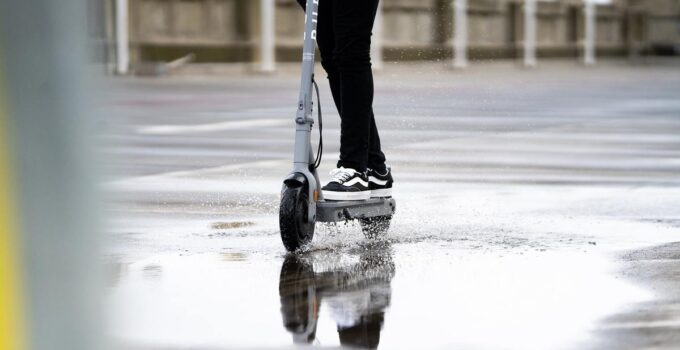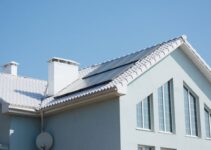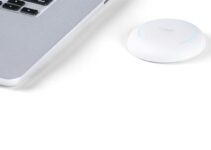Imagine excitedly waking up early in the morning to use your new electric scooter, only to find out that it’s going to be a drizzly day. Well, you don’t really mind getting soaked to the skin, but the problem is you aren’t sure if it is even safe to ride an electric scooter in the rain.
Since electric scooters run on rechargeable batteries, we understand that you fear getting electrocuted if you ride yours when it’s raining. In fact, most manufacturers do not recommend using an electric scooter in heavy rain, especially in flooded areas, since water can severely damage an e-scooter’s electrical system.
The good news is, some adult electric scooters can withstand light rain! Yes, different models of electric scooters have different water resistance ratings, so you’re lucky if your scooter is heavy-duty enough to still perform under wet conditions! But then again, you cannot take away the fact that electric scooters work on batteries and electronics don’t work well with water, so it is still best to exercise caution when using your wet e-scooter.
In this article from iscoot.com.au, let’s take a look at why electric scooters are generally not compatible with heavy rain.
Page Contents
Why can’t electric scooters get wet?
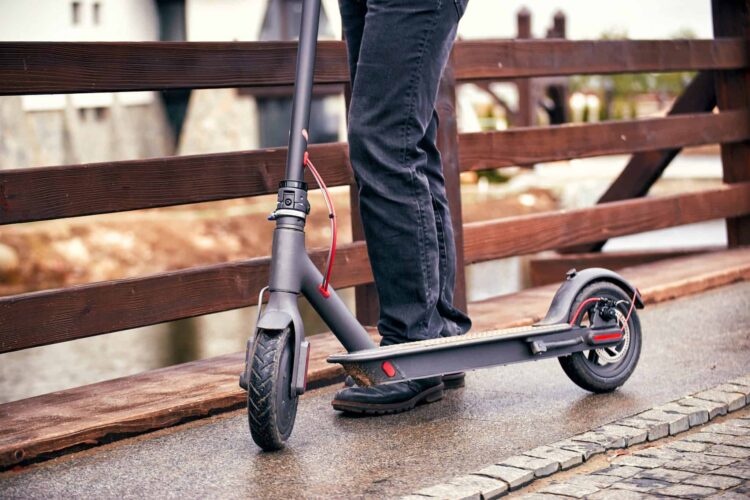
Source: electricridelab.com
It’s not that electric scooters can’t get wet at all. They’re not that vulnerable, you know. In fact, you can still ride your scooter when it’s raining, so long as it’s not raining heavily. This is because while a few raindrops will not cause any damage to your e-scooter, heavy rain can damage your vehicle’s electrical system, disabling it for future use.
Remember when science told you that water and electronics shouldn’t be together? While water itself does not conduct electricity, the impurities suspended in water—including salt and dust–do. The oppositely charged ions of these minerals break apart in water, and when they get introduced to an electric charge, they align with the polarity of the charge, creating a current. You know what happens when you touch something with electric current, right?
Is your electric scooter waterproof?
Like we said, most e-scooters can withstand a drizzle. But no matter how heavy duty your e-scooter is, it cannot be entirely waterproof! That’s basically why manufacturers caution against using an e-scooter in heavy rain or exposing it to excessive moisture.
Take note though that being waterproof is not tantamount to being water-resistant. The reason why you can ride your electric scooter in light rain is that electric scooters are generally water or splash-resistant, but not waterproof—so stop wondering why you can use your scooter in light rain but not in flooded streets or deep puddles.
What does your e-scooter’s IP rating mean?
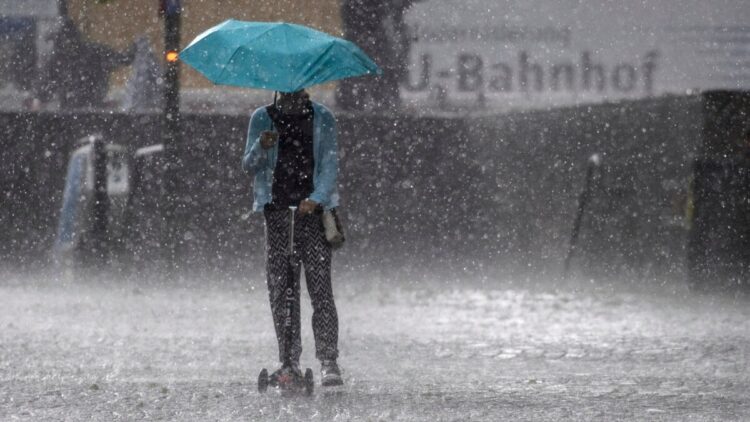
Source: voanews.com
If you want to better understand how water-resistant your electric scooter is, check out its IP rating. This is one of the first things you need to take note of when buying an electric scooter. The IP (ingress protection) rating is an international standard used to gauge how capable an equipment is of resisting dust and moisture without sustaining damage to its internal parts. If you’re buying a new electric scooter, make sure that this IP rating is included in the specifications of the vehicle.
Let’s say your e-scooter has an IP rating of 45. What does that mean? Well, all IP ratings consist of two numbers, the first digit showing how resistant it is to dust and foreign bodies and the second digit showing how resistant it is to moisture and sprinkles. An electric scooter with an IP rating of 66 means that it is totally protected from dust and high-water pressure, while one with a rating of 54 means it has limited protection from dust but is protected from water splashes.
If your scooter has a rating as high as IP67, that means you can totally submerge it in water. You will love how heavy-duty this scooter is, but you will find that its cost is almost twice that of an average e-scooter. Usually, the more low-cost your e-scooter is, the more you should not allow it to get wet under any circumstances. Although the risk of electric shock may be low, any amount of moisture that may linger under its rubber-covered handlebars and decks may render your electric scooter totally inoperable. You wouldn’t want that to happen, would you?
Aside from the IP rating, there are many other features that you need to consider to ensure that your electric scooter is safe to use even when it’s raining. Electric scooters that feature lights bright enough to be seen in light rain are usually safe, but it’s better if they have slip-proof decks and fenders to keep your feet and legs from getting soaked during your ride.
Can you waterproof your electric scooter?
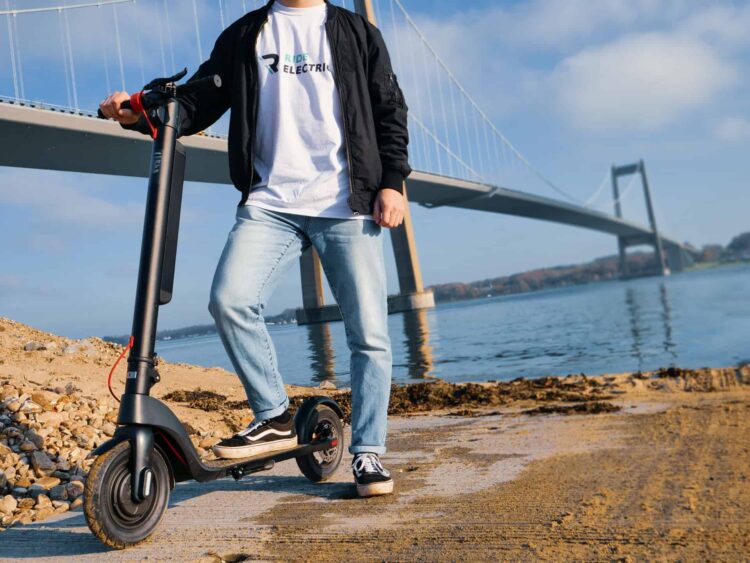
Source: eridehero.com
If your e-scooter is water-resistant but not waterproof, you’re probably wondering if there’s any way you can waterproof it. Like we said, an electric scooter cannot be entirely waterproof. However, you can do a few things to make it less prone to damage when it rains. One thing is by protecting the connectors by applying dielectric grease, which isolates the connectors from humidity and air and protects them against oxidation. You may also use liquid tape to isolate the components of your e-scooter or use battery bags sprayed with waterproofing spray and potting components to make sure its parts are sheltered from the rain.
Conclusion
There are times when no matter how careful you are, your electric scooter will just get wet—either because of a huge splash of water from somewhere or the rain suddenly pouring down. When this happens to your scooter, the best thing to do is to turn it off immediately, take out its battery and store it in a dry place until the moisture dries up. For your own safety, make sure that you use a water-resistant cover when your electric scooter is not in use. This will make sure that your scooter is safe from humidity and excessive moisture while in storage. If a water-resistant cover is not available, you may opt for a canopy to shelter your scooter.

